Set amid dramatic mountains in Albania’s ancient heartlands, Berat is packed with historic charm and uniquely UNESCO-worthy architecture.
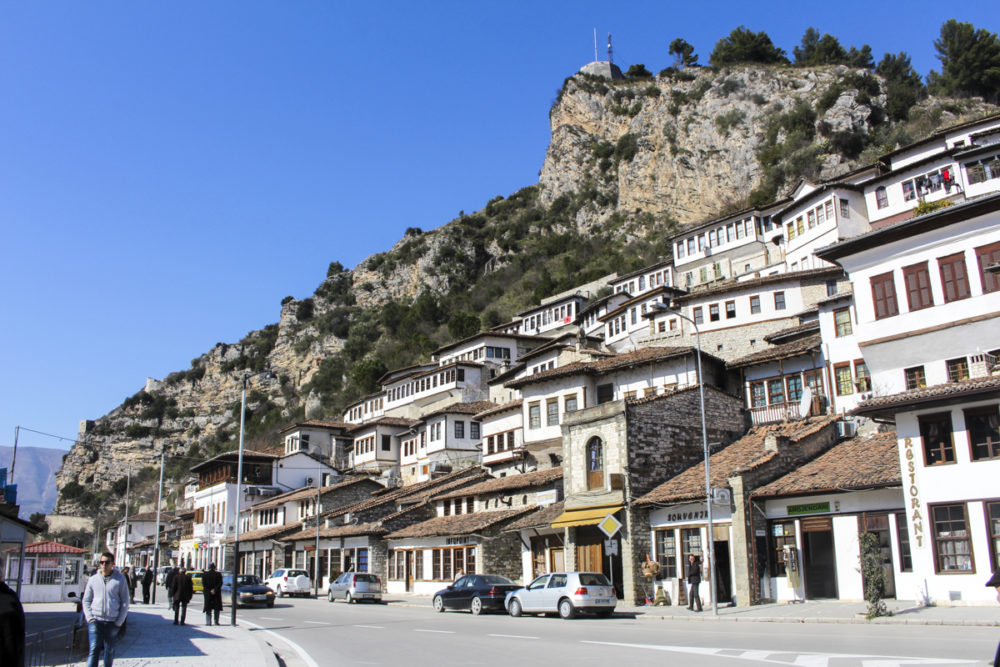
Berat’s Mangalem Quarter (Photo: Paul Stafford for TravelMag.com)
Variously known as the White City, and the Town of a Thousand Windows, Berat is an extraordinary Balkan settlement in central Albania. The latter nickname is immediately obvious when you roll into the old town, where layer upon layer of windowed facades seemingly overlap one another as they step their way haphazardly up the steep slopes either side of the Osum River. They are joined by the occasional skinny minaret and old stone bridge to form a picture lifted from a history book.
There’s a marvellous, timeless quality to this stretch of Albania. The mountains seem impassable, the rivers often rage down the valley, blackouts are well known, and the old buildings have been faithfully maintained, despite the economic challenges that often render their upkeep a struggle. Berat’s Old Town often feels as though it has not yet been informed about the 21st century. As such Berat, along with Gjirokaster to the south, was inscribed on UNESCO’s World Heritage List in 2005.
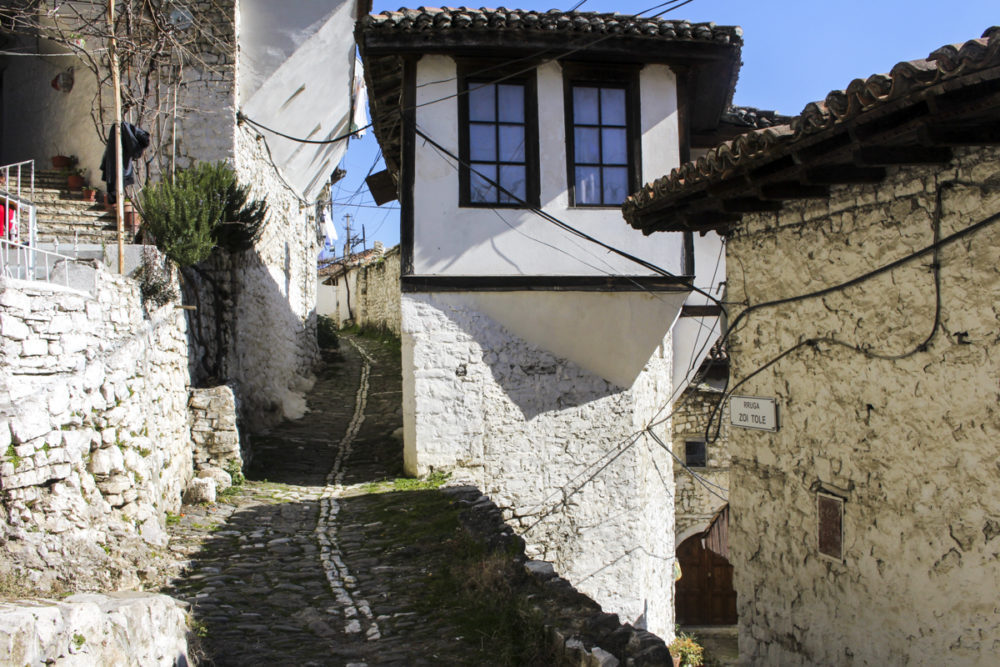
A narrow street in Berat’s Mangalem (Photo: Paul Stafford for TravelMag.com)
Of the old neighbourhoods dotting the riverside, the most authentic remains the Mangalem Quarter, whose narrow cobbled streets are only accessible by foot or horse. With the latter in short supply, exploring this open air museum is rewarding but can be quite tiring. Make sure you wear comfortable footwear. It houses three historic mosques, including the 16th-century Sultan’s Mosque. You can also get a closer look at the quirky facades, where the upper floors contain the characterful windows, many of which now serve as unusual and memorable visitor accommodations.
Things to Do
Crowning the hilltop above the old town is Berat Castle (Rruga Mihal Komnena), which contains its own little citadel town within the walls called the Kala, or Kalaja. It’s a steep trudge up the road or via the numerous footpaths of rough stone to get there, but the views from the ramparts, taking in the alluvial river plain and sweeping mountain range beyond, are well worth it.
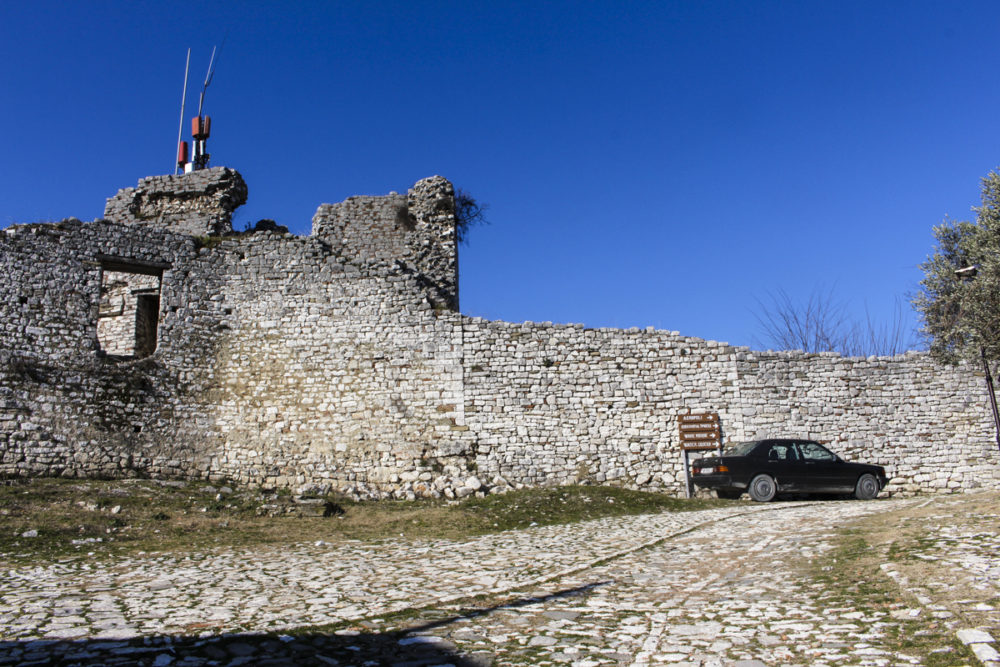
Walls of Berat Castle (Photo: Paul Stafford for TravelMag.com)
To get to grips with local history and put the town you see into greater context, the Ethnographic Museum (Rruga Toli Bojaxhiu), just off the road between the Old Town to Berat Castle, is a great place to begin your trip. The building containing it is a traditional Ottoman house from the 18th century. Social history and customs are unveiled within its walls, giving a flavour of what daily life would have looked like here.
The Kala itself is a mix of heavily dilapidated walls, watch towers, churches and mosques, interspersed with homes, guesthouses and museums. Orthodox Christianity and Islam often jostle for the hearts and minds of people throughout the Balkans. In Albania, although mosques often seem more prominent, Berat remains a stronghold for both Islam and Christianity.
Shën Mërisë Cathedral (The Kala; aka The Church of St Mary) sits amid the castle ruins, itself a construct from 1797 that was built over the ruins of a 10th century chapel. Its fading frescoes and ancient wooden beams give the interior a vaguely subterranean feel. Within the cathedral building is the Onufri Museum, showcasing a collection of religious iconography.
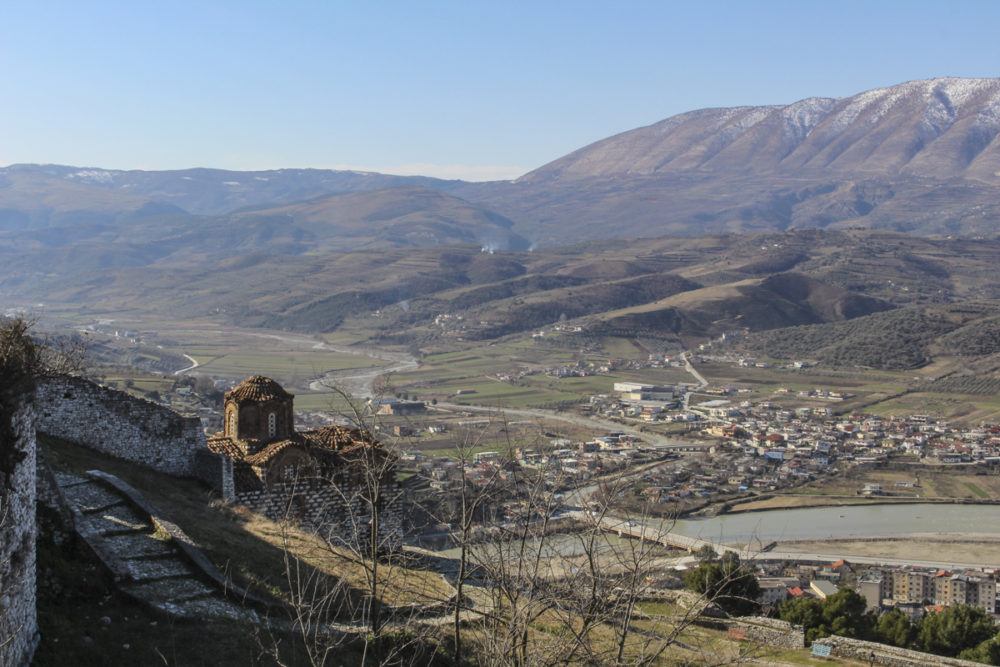
Berat’s Holy Trinity Church (Photo: Paul Stafford for TravelMag.com)
Byzantine architecture is a common feature throughout the Kala, particularly in the churches, such as that of the Holy Trinity (The Kala), which enjoys a dramatic location looking over the valley. When Berat became part of the Ottoman Empire in 1417, Islam replaced Christianity as the region’s main religion, although the architectural stylings crossed clerical boundaries without impediment, and therefore the characteristic striated bands of white and red brick are visible in the remains of the Red Mosque, Berat’s oldest, dating back to the 15th century.
Many of the kala’s other buildings and chapels are often locked, but you can ask at the Onufri Museum about the possibility of gaining access.
Where to Stay
Whether you stay in the Old Town or Berat Castle, you’re likely to find rooms that have changed very little in many centuries. Take Hani i Xheblatit (Rruga Antipatrea, Lagja Mangalem), for example, where carved wooden ceilings, bare brick walls and wooden floors overlaid with hand-woven rugs are not modern quirks of design but faithful distillations of the building’s original features. Modern showers have allowed a little 21st-century luxury into the space, but beyond that it’s a remarkable slice of history to call home for a few nights.

Comfortable rustic style at Hani i Xheblatit (Photo: Booking.com)
Like the previous guesthouse, Beratino Hotel (Rruga Zoi Tola, Lagja Mangalem) is located in the Mangalem neighbourhood, where views from the terrace seem to incorporate nothing made after the 19th century, save for a few power lines and cars. Breakfast is served on a delightfully rustic veranda. Some of the rooms have their own balcony.
To stay within the walls of Berat Castle, there is a similar array of memorable traditional hotels and guest houses, among which is Hotel Klea (Berat Castle). Generally excellent value and including breakfast in the room rate, there is also a highly rated restaurant on site. Parts of the hotel feel like a museum, which is only enhanced by the castle walls being only metres away from the property.
Eat & Drink
Temi Albanian Food (Berat Castle) is a great place to find traditional local fare, with the bonus of being located in the Kala. Tables are placed right on the cobblestone street, while the upper floor dining space has the best views. The moussaka is a house specialty, although the stuffed aubergines and the fërgesë tirane – a traditional dish of baked peppers, tomato, onion and cottage cheese – are notable accompaniments.
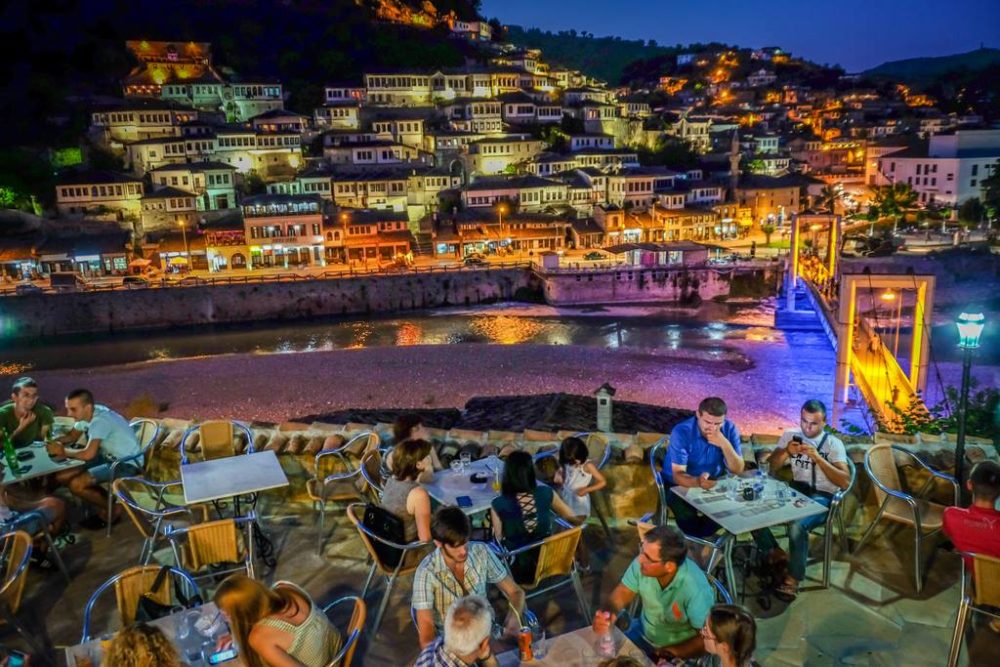
Food with a view at Antigoni (Photo: Courtesy of Antigoni Berat)
Heaven’s Kitchen (Rruga Antipatrea) certainly sounds like the kind of place you might want to spend some time. However, given the bravura, the fare is surprisingly light on Albanian dishes, opting more for a Greek-meets-Italian fast food approach. Gyros and pizzas are the highlights, with souvlaki and grilled meats taking up another hefty portion of the menu.
Further uphill from Heaven’s Kitchen is Lili Homemade Food (Rruga Llambi Guxhumani), a lynchpin of the Mangalem Quarter’s food scene. The vibe is decidedly different here; more in keeping with the old world traditions expected of Berat. The menu is essentially a weathered piece of plywood with large photos of the handful of Albanian dishes available pinned to it. Each one is delightfully homemade and authentic, as are the wine and raki.
One downside of eating in the Mangalem Quarter is that the views are invariably away from it. Antigoni (Rruga Kristaq Tutulani), sits across the river (crossed using a sturdy bridge) in the Gorica neighbourhood, which is the lesser known, but equally charming cousin of Mangalem. The restaurant enjoys some of the best views in Berat, and the traditional Albanian cuisine is made to a high standard.
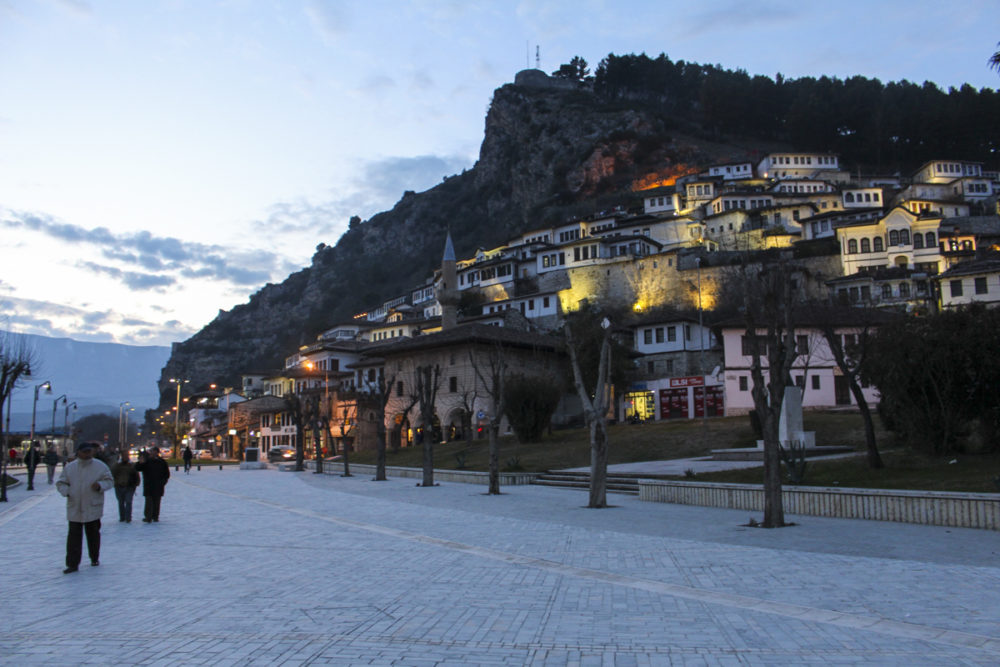
Berat Old Town (Photo: Paul Stafford for TravelMag.com)
Grab some lunch and a little fuel to get you up to the castle at Gemma’s Cafe & Grill (Rruga Namik Meqemeja), which is conveniently located next to the Ethnographic Museum. The menu is primarily western in its influence (think hot dogs and grilled cheese sandwiches), but you can find a good byrek (a popular snack through southeastern Europe usually consisting of spinach and cheese in flaky pastry) and thick Albanian coffee for something more regional.